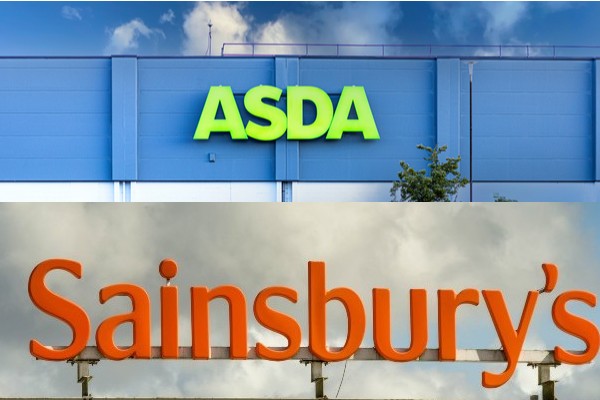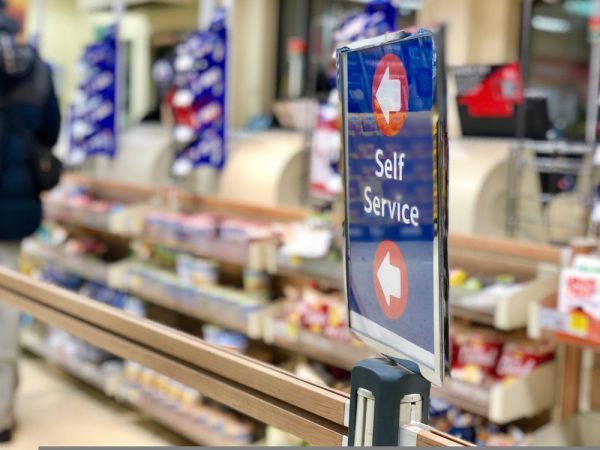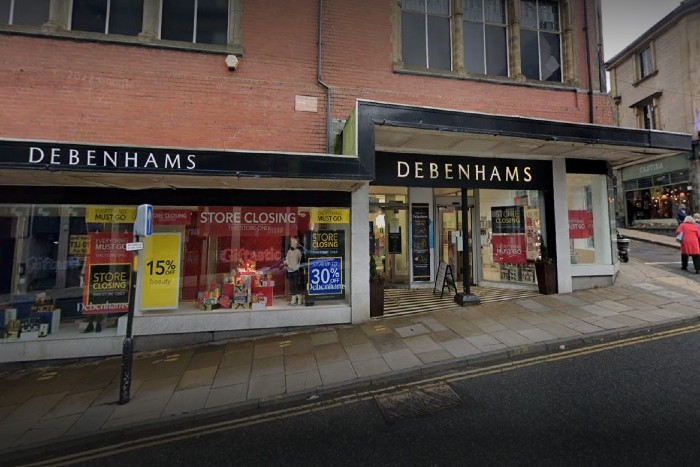In the 18 months since the Issas snapped up Asda, little has been revealed about their strategy for the supermarket but one thing is clear – the billionaire brothers are gunning for rival Sainsbury’s.
The tycoons are focused on toppling Sainsbury’s to reclaim their position as the UK’s second largest supermarket.
“We are happy to commit whatever we need to get to that position,” Mohsin Issa told The Sunday Times earlier this year. “It’s not like we have got a clear five-year ‘get out’ plan; we and TDR have bought this business for the long term.”
It’s a big task. Sainsbury’s share stands at 14.9%, while Asda lags behind at 13.7%. Moreover, Asda has been losing share at a faster rate that Sainsbury’s. Just three months ago Sainsbury’s share stood at 15.1%, while Asda’s was at 14.5% meaning it has fallen 0.8% over that period.
But what will Asda do – and can it succeed in its aim of overtaking Sainsbury’s?
Asda’s grand plan
Although Asda has not revealed a masterplan, we do know where it is making big investments, which it says will bring “long term to benefit the business in the years to come”.
Value, expanding its fledgling convenience business, improving the retail experience and creating more reasons to visit are core to its plan.
So, let’s take those strategic priorities, one by one.
Value
Enhancing Asda’s value credentials is crucial as the cost-of-living crisis rages on.
Asda, which before the arrival of Aldi and Lidl to these shores was viewed as the budget-friendly supermarket for UK shoppers, is focused on rebuilding its value reputation.
An Asda spokesperson tells Retail Gazette: “We know that things are difficult for many customers right now – in our most recent Pulse of the Nation survey 50% of customers said they are worse off financially compared to 12 months ago.
“In this climate, we are focused on keeping prices down and ensuring that Asda remains the lowest-priced Big Four supermarket.”
It is investing in prices, including a £45 million investment in Dropped and Locked, an initiative to lower snd freeze the prices of essential products . Asda has also ploughed £43 million into new budget range Just Essentials, a move that seems smart given shoppers are trading down to own-label products.
Asda says it was already seeing a growth in own-label as inflation continues to rise. “We’re ensuring we’re meeting customers’ needs in this area with investments in ranges like Just Essentials,” the Asda spokesperson says.
“Just Essentials has been specifically designed to provide customers with everything they need to keep the household running within their budget. With 300 products it’s one of the largest value ranges in the market and is 50% bigger than the current Smart Price range but can be bought for the same everyday low prices.”

Retail analyst Bryan Roberts, founder of Shopfloor Insights, says the Just Essentials is “not pretty but it’s effective”.
“It will help reassure low income shoppers that Asda is an affordable destination,” he says.
But is this enough to win new customers?
GlobalData consumer analyst Amira Freyer-Elgendy believes not. “Asda’s new line does not give it a competitive edge over its rivals, but it will be crucial in preventing shopper desertion due to trading down.
“The new range, alongside its promised year-long price-lock, will encourage customer loyalty and will allow Asda to focus on its core audience. It may not increase spending, but it will curb losses related to downtrading.”
However, retail analyst Nelson Blackley believes Asda’s value push is unlikely to stand out in a grocery market saturated with budget messages.
“The Asda ‘Just Essentials’ range, which is an expanded version of their existing Smart Price range, won’t be unique and so unlikely to provide a significant competitive advantage. All grocers are focused on similar activities around their ‘value’ ranges as are other national retailers including Boots.”
One retail expert tells Retail Gazette that Asda’s value message is crucial right now, because “if it loses value, it loses the whole weekly shop”.
Roberts has doubts over whether the Issas will maintain Asda’s keen pricing.
“There could be a temptation to let their prices slip a little – that’s certainly happened in petrol,” he tells Retail Gazette.
“With private equity ownership and fairly hefty lumps of debt, could they let prices drift a little to try to make more margin or are you going to be resolute about being the cheapest of the Big Four?”
Convenience
Another big growth avenue for Asda is to push into convenience. The retailer has been working with the Issa brothers EG Group to rollout Asda on the Move, a convenience format selling Asda products on petrol station forecourts.
It currently has 35 Asda on the Move stores and it plans to roll this out across EG Group’s petrol stations “as quickly as this can be achieved”.

Freyer-Elgendy believes that Asda investing in convenience is a good way for it to grow share as it is an outperforming channel.
However, it is also highly competitive, especially with disrupters to the traditional model, like rapid delivery services and dark stores, gaining traction.
Blackley also points out that petrol forecourt locations may not be the most thriving convenience locations right now.
“Whilst a year ago providing a convenient way to ‘top-up shop’ whilst buying petrol might have appeared attractive, record high prices for fuel will probably mean less frequent visits to a petrol station as people cut back on car journeys,” he says.
“Even if drivers do visit their local petrol station, paying up to £100 for a tank of fuel might also reduce their appetite to then spend more on picking up some grocery products at the same time.”
However, Asda’s ambitions in convenience could reach further than Asda On The Move. Roberts highlights that the grocer is currently recruiting for property acquisition managers to “spearhead our plans to develop a convenience chain, a new format for the business”.
The role involves “pro-actively sourcing new acquisition opportunities across multiple formats”, while “working closely with the in-house town planning team to secure appropriate planning and regulatory consents are in place”.
However, Roberts says that building a c-store business from scratch could be challenging for the grocer.
“Asda is late to the market. We’ve already seen the prime sites get snapped up by the likes of Tesco and Sainsbury’s,” he says.
Retail experience
Another big focus for Asda is to create a “simple, best-in-class retail experience”.
In terms of food, this means investing in its fresh food proposition. Asda has introduced specialist greengrocers into stores as part of a £9 million investment.
The greengrocer roles are filled by a combination of existing colleagues and new hires, and focus exclusively on Asda’s fresh produce offer in store. Based on the shop floor, the specially trained greengrocers are responsible for quality, standards, and product availability.

Fresh is an important category not just for Asda but all of the grocers. Mike Snell, managing director of Asda’s fresh produce division, IPL says it accounts for more than half of its best-selling lines by volume.
“We are making this investment to enhance the experience our customers receive when shopping for fresh fruit and vegetables,” he says.
Since October, greengrocers have been introduced to 150 Asda stores and the supermarket says it will roll out to another 150 in the coming months.
Freyer-Elgendy believes it will be a tough job for Asda to be seen as the destination for top quality fresh produce.
“Asda has proven to be a cost-effective option but demonstrating the quality of its products will be key in 2022,” she says.
Roberts has been impressed with what he’s seen so far. “They’ve identified that fresh produce is one of the main drivers of quality perceptions and they weren’t really cutting it in that regards.
“There’s been a lot of investment in that over the past year and that’s really paid off in terms of what you find in stores. They need to do the same with meat, fish and poultry as the shopper perception in those categories isn’t the strongest.”
Asda’s focus on specialist fresh food and service comes at a time where rivals, including Tesco and Sainsbury’s, have been removing specialists focused on areas such as deli and bakery from stores, and could give it a point of difference.
More reasons to shop
Another big aim for Asda is to create more reasons for customers to visit its shops.
The Asda spokesperson says a third of those who answered its latest Asda customer survey said that they are looking to combine multiple activities with a trip to the supermarket to help save on fuel costs.
“Through our partnership strategy we’re able to meet this need by giving customers relevant choice and access to a wider range of products and services from great brands,” the spokesperson says.
Asda has teamed up with several third-party brands to give its shoppers more reasons to shop. This has widened its foodservice, general merchandise and fashion offer.
In food, it has teamed up with Greggs, Cake Box, Sushi Daily, Asian streetfood specialist Panku and independent halal butchers, which have all taken counter space in store. It is also bringing in foodservice partners that EG Group owns or has a relationship with such as Leon and Subway.

Some of these ‘food for now’ franchises take over space formerly used by meat and fish counters, an area Asda like other grocers, including Sainsbury’s and Tesco, has pulled out of in recent years.
Roberts says Asda has retreated from these areas “more elegantly” than some.
“It’s retained a lot of the value of counter areas and has avoided the scorched earth policy that Sainsbury’s has done,” he says.
In general merchandise, Asda has partnered with brands including Decathlon, B&Q, and Claire’s Accessories to introduce store-in-stores to its big supermarkets. Meanwhile, in fashion it has brought New Look, In The Style and Missguided concessions to stores.
All in all these third party brands give shoppers a far greater impetus for shoppers to visit and turn its bigger hypermarkets into mini-shopping centres.
The best example of what Asda is capable of delivering in terms of store experience is evident in its Milton Keynes supermarket, which is its largest store and is used as a testbed for innovations.
It’s a store that Roberts is impressed with, particularly its food offer.
He says: “Having a supermarket café isn’t that compelling whereas is you replace that with a Leon, Cinnabon and a Sparrow, all EG own or franchised brands, it gives another reason to visit the store. The service counters are also very good.
“I think some of what they’ve done at Milton Keynes is really scalable. They’ve already rolled out Panku and halal butchers to loads of stores.”
Building a loyalty offer
Establishing its own loyalty programme is another Asda plans to entice shoppers to visit more often.
Asda Rewards is currently available in 48 stores and will be rolled out further in the coming months.

“It’s still only in four or five cities or regions at the moment but it’s really good and offers very tangible rewards in terms of cashpot you accumulate.
“If you compare Asda Rewards to other loyalty endeavours across the market it’s good. It rewards frequency, spend and certain behaviours and Asda can use it to extract some kind of investment from suppliers.”
In fact, he prefers it to Sainsbury’s well-established Nectar scheme.
Roberts believes it will offer Asda future growth opportunities too. “In the fullness of time, Asda will be able to monetise data insights and become a media owner.”
Can Asda overtake Sainsbury’s?
While all of these intiatives sound sensible, are they enough to overtake Sainsbury’s?
Freyer-Elgendy believes not in the short-term.
“There is a 0.7 percent point difference in their market share in 2021, and we expect Sainsbury’s is going to maintain that lead in 2022.
“The average Sainsbury’s shopper is less exposed to the cost-of-living crisis compared to the average Asda shopper,” she says.
However, Roberts argues that Asda’s reputation as being keener on price than Sainsbury’s could help it in the current market.
“Theoretically the cost-of-living crisis is more likely to favour Asda than it will Sainsbury’s given their relative price position.”
However, the experts agree that Sainsbury’s should not be Asda’s focus right now – it’s priority should be protecting its share from the discounters.
“If they’re getting the organisation focused on trying to beat Sainsbury’s, that would be the wrong kind of strategic direction because the ones they need to worry about are the discounters,” the retail expert says.
“The discounters cleaned up in the 2008 recession and they’re cleaning up again right now.
“People are doing more frequent shops. With petrol costs, people don’t really want to do the big drive to the supermarket. The discounters are the ones to worry about.”
Roberts agrees that the core challenge for Asda right now is making sure its shoppers don’t switch to the discounters.
“Winning over shoppers from other retailers will be pretty hard going. Really its a question of who will have the least market share taken off them by the discounters,” he says.
Is Asda better equipped to stop the march to the discounters than Sainsburys?
“Out of the Big Four Asda has the strongest price reputation but when you look at the broader market their USP becomes being the third least expensive grocer behind Aldi and Lidl, which isn’t such a great positioning to have,” Roberts says.
Freyer-Elgendy argues that Sainsbury’s shoppers are also more affluent than Asda’s and are less likely to succumb to downtrading.
However, Roberts does concede that Asda has already suffered pain at the hands of Aldi and Lidl as both have already focused their expansion efforts on Asda’s stronghold in the north of England. Now the discounters are targeting the southeast for expansion.
“Theoretically, Tesco, Sainsbury’s, M&S and Waitrose are going to get the most sustained competition from new Aldi and Lidl stores over the next year or two,” he says.
But, of course, it’s not just Aldi and Lidl threatening the grocers’ share right now.
Roberts says: “Home Bargains and B&M are slapping down new space everywhere with a more-than-credible grocery offer. Asda is getting a kicking on things like health and beauty and household from Home Bargains and B&M, and they’re adding in more and more grocery ranges.”
Asda’s ambitions to overtake Sainsbury’s may have to wait. Right now, it should be throwing everything it has into fending off the discounters. Focusing on anything else could well be a dangerous distraction.
Click here to sign up to Retail Gazette‘s free daily email newsletter
















